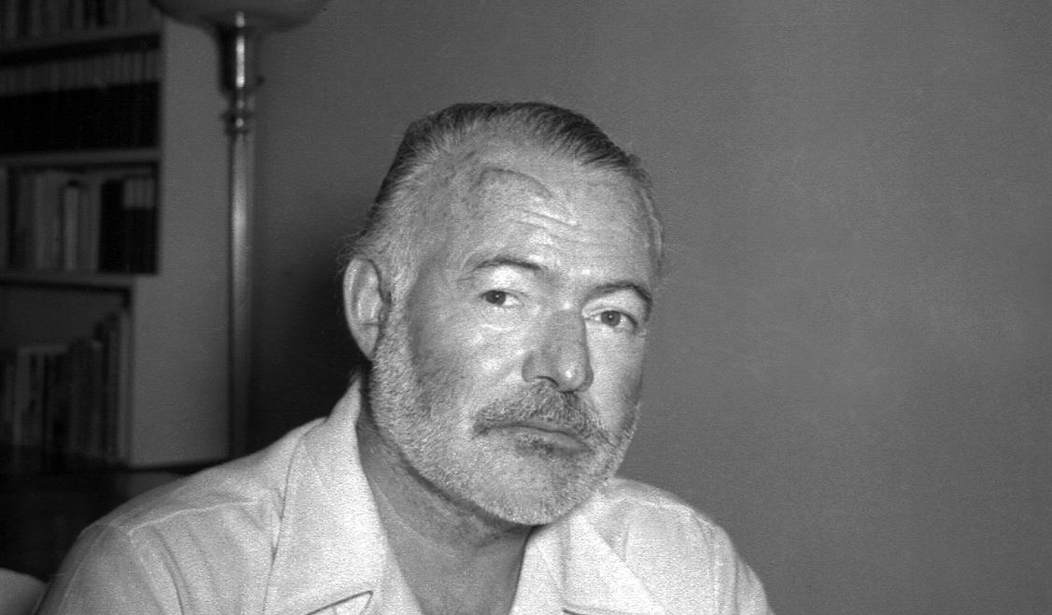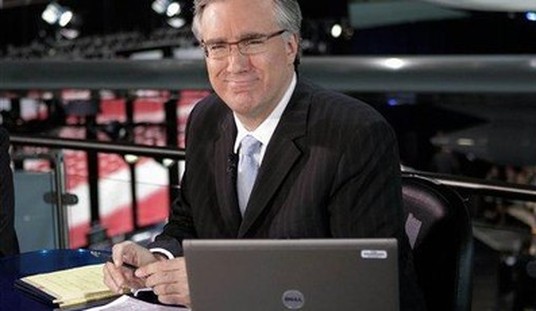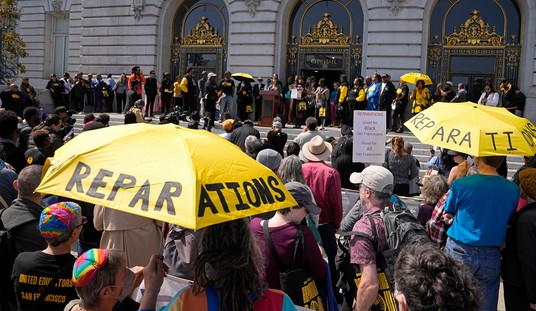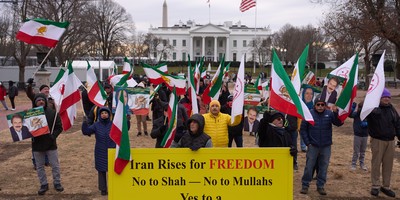“The annual Hemingway Look-Alike Contest began in Key West on Thursday, marking the 123rd anniversary of Ernest Hemingway’s July 21 birth,” reports the AP. “Hemingway Days continues through Sunday with events including an offbeat “Running of the Bulls” spoof and the Key West Marlin Tournament.”
Perhaps an “offbeat spoof” of torture and murder in Moscow’s Lubyanka prison would also be appropriate.
Perhaps some of you weren’t aware that declassified Soviet documents proved that Ernest Hemingway officially signed up with the KGB’s precursor the NKVD as “Agent Argo” in 1941?
Yes, Ernest Hemingway voluntarily joined the most murderous organization in modern history—at precisely its most murderous phase.
OK. But don’t take it from me. After all I’m a “rabidly right-wing-Cuban exile-with-an-axe-to-grind!” Instead take it from the crypto-commie (but well-sourced) UK Guardian.
According to KGB defector Alexander Vassiliev in a book published by Yale University Press (not exactly a branch of the John Birch Society), “the 42-year-old Hemingway was recruited (by the KGB) under the cover name “Argo” in 1941 and cooperated with Soviet agents whom he met in Havana and London.”
Turns out that Papa failed pathetically at his KGB assignment. But hey, it’s the thought that counts! And the thought was to be a member of the most murderous organization in modern history during its most murderous phase. (Stalin’s NKVD under Lavrenti Beria.) A singular honor, surely!
Contrary to the Media-Academia fairy tale about mean ‘ole Uncle Sam pushing the benevolent Cuban revolution reluctantly into the arms of Mother Russia—Raul Castro and Che Guevara had a KGB handler as early as 1956. His name was Nikolai Leonev and until his recent death was often featured with Raul on Cuban media guffawing about the monkeys they made of our crackerjack CIA sleuths stationed in Cuba at the time. To wit:
Recommended
“Don’t worry. We’ve infiltrated Castro’s guerrilla group in the Sierra Mountains. The Castro brothers and Ernesto “Che” Guevara have no affiliations with any Communists whatsoever” (crackerjack Havana CIA station chief Jim Noel, 1958).
“Me and my staff were all Fidelistas” (Robert Reynolds, the CIA’s Caribbean Desk chief from 1957 to 1960).
“Everyone in the CIA and everyone at State was pro-Castro, except [Republican] ambassador Earl Smith” (Robert Weicha, CIA operative in Santiago Cuba).
“Without U.S. help Fidel Castro would never have gotten into power. The State Department played a large part in bringing Castro to power. The press, the Chief of the CIA Section are also responsible… we are responsible for bringing Castro in power. I do not care how you want to word it" (Earl T. Smith U.S. Ambassador to Cuba, 1957-59).
“Castro’s revolution is very pure and beautiful," gushed Hemingway in March, 1960. “I’m encouraged by it. The Cuban people now have a decent chance for the first time. The Cubans getting shot all deserve it.”
Quite fittingly, when Soviet diplomat Anastas Mikoyan finished his courtesy calls on Fidel Castro and Che Guevara in Havana in 1960—this long-time Stalin and Beria confidant made it a point to call on Ernest Hemingway.
Hemingway knew full well what was going on behind the scenes of Castro and Che’s “pure and beautiful” revolution. Accounts of "Papa” Hemingway’s eager presence at many of the Katyn-like massacres of untried Cubans comes courtesy of Hemingway's own friend, the late George Plimpton (not exactly an “embittered right-wing Cuban exile!”) who worked as editor of the Paris Review, (not exactly a "McCarthyite scandal sheet.")
In 1958 George Plimpton interviewed Hemingway in Cuba for one of the Paris Review’s most famous pieces. They became friends and the following year Hemingway again invited Plimpton down to his Finca Vigia just outside Havana. James Scott Linville, an editor at The Paris Review during the 1990s, while relating how this high-brow publication passed on serializing the manuscript that became Che Guevara’s Motorcycle Diaries, reveals “Papa’s” unwitting role in the rejection.
“I took the paper-clipped excerpt upstairs to the Boss (Plimpton),” writes Linville, “and said I had something strange and good. As I started to tell him about it, his smile faded. I stopped my pitch and said, 'Boss, what's the matter?'"
"James, I'm sorry," Linville recalls Plimpton replying. A sad look came over him, and he said, "Years ago, after we'd done the interview, Papa invited me down again to Cuba. It was right after the revolution. “There's something you should see,” Hemingway told Plimpton while preparing a shaker of drinks for the outing.
“They got in the car with a few others and drove some way out of town,” continues Linville (who is recalling Plimpton’s account.) “They got out, set up chairs and took out the drinks, as if they were going to watch the sunset. Soon, a truck arrived. This, explained George, was what they'd been waiting for. It came, as Hemingway knew the same time each day. It stopped and some men with guns got out of it. In the back were a couple of dozen others who were tied up. Prisoners.
“The men with guns hustled the others out of the back of the truck, and lined them up. Then they shot them. They put the bodies back into the truck.”
And so it started. Within a few years 16,000 men and boys (some of them U.S. citizens) would fill mass graves after scenes like the ones that so charmed Papa Hemingway with his thermos of specially-prepared Daiquiris. The figure for the Castroite murder tally is not difficult to find. Simply open "The Black Book of Communism," written by French scholars and published in English by Harvard University Press (neither exactly an outpost of “embittered- right-wing Cuban-exiles-with an axe-to-grind!”)
“Pure and beautiful” indeed, Mr Hemingway.

























Join the conversation as a VIP Member